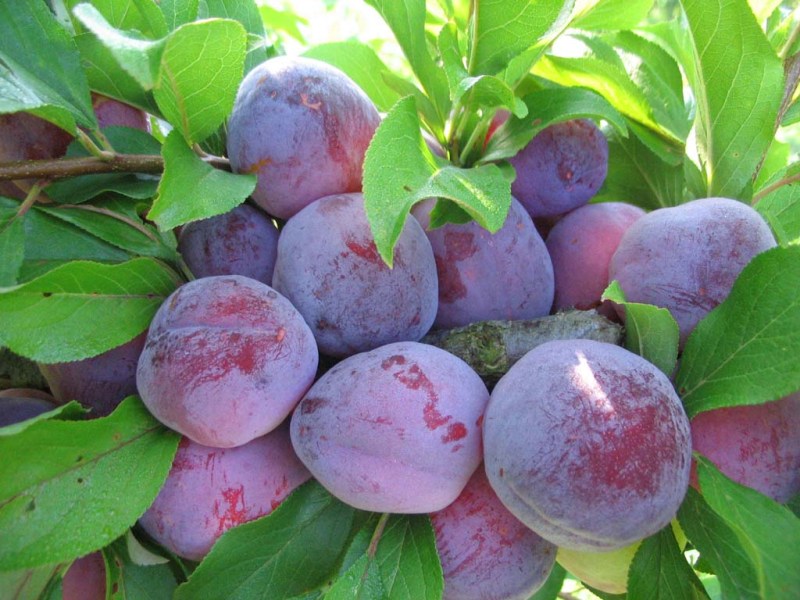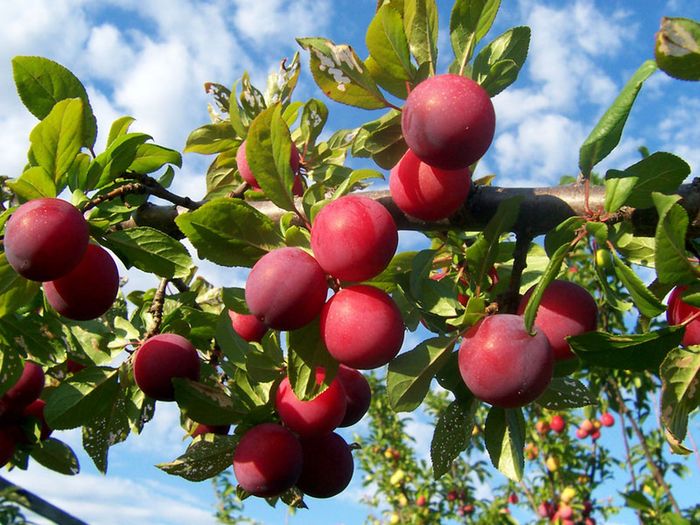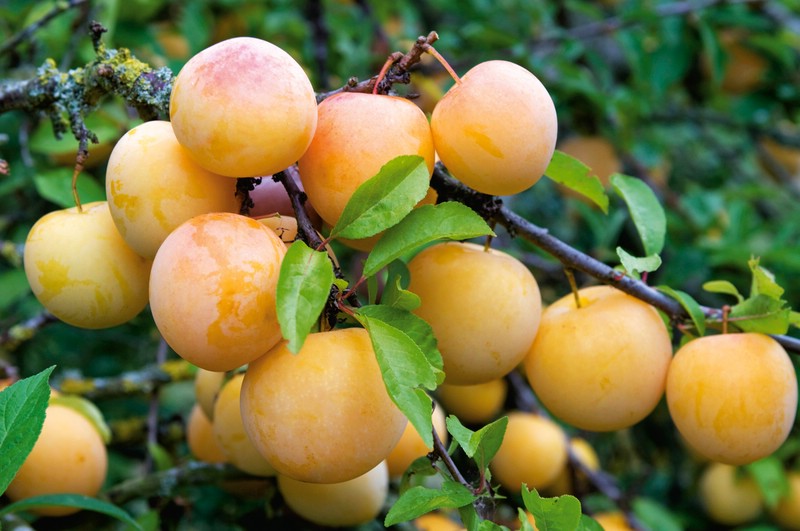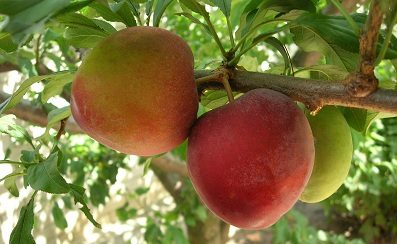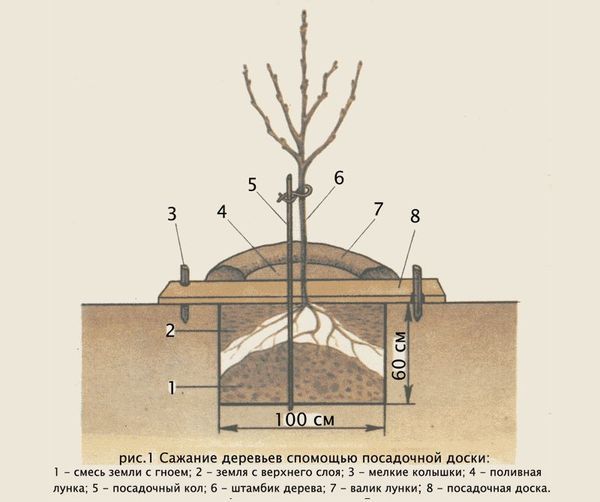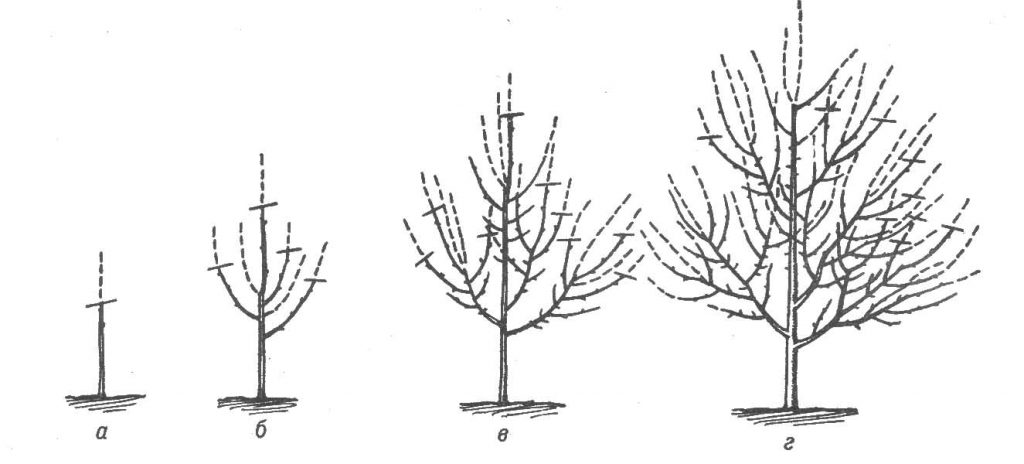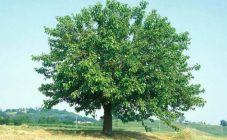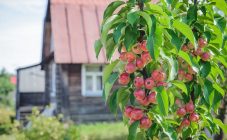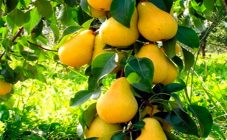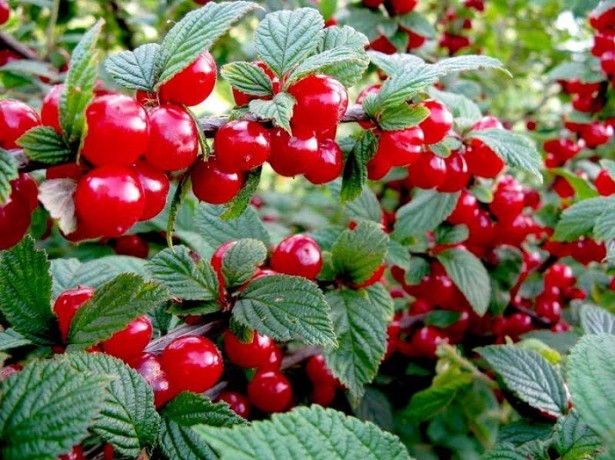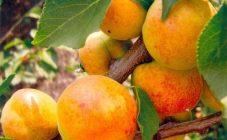Content:
Growing a fruit plant in a Siberian climate is not easy, but quite possible. The article describes how to choose a suitable variety of plums for planting in harsh climatic conditions, and also describes the rules for the care and growing of fruit crops.
Climatic conditions
There are a large number of types of plums that are highly resistant to frost, which are suitable for growing in Siberian regions. They tolerate winters well, but some problems cannot be avoided with them, which depend on:
- Temperature changes can lead to freezing of the buds and the top of the tree. It is recommended to give preference to varieties with a long dormant period and weak buds.
- Wind-dried shoots.
- Due to the absence of frost and the presence of snow, the lower part of the trunk dies off. Removing snow in this case will not help, as the root system may freeze.
Based on the facts presented, a conclusion is drawn: steppe regions and separate zones with a small amount of snow are suitable for growing fruit trees.
Choosing a frost-resistant variety
Which plum is better to plant in Siberia? The best option is frost-resistant self-fertile varieties. These include:
Ussuriyskaya plum
He loves moisture, but does not tolerate its accumulation, since in this case the root system decays. But a lack of water will lead to leaf fall and a decrease in winter hardiness. Of the Ussuri plums, Siberian winters are best tolerated by the following varieties: Zarya Altai, Altai Jubilee, Pyramidal, Red-cheeked, Yellow Hopty.
All of them are frost-resistant, damp-proof, early-growing varieties. Moreover, they are practically self-infertile. Flowering and fruit formation occurs when 2–3 pollinators are nearby.
Canadian plum
Grows in Canada and the United States. In terms of habitat, it is similar to the American plum. In Russia you can find Karzinskaya - a mixture of Canadian and American culture. Karzinskaya plum is represented by the following varieties: Rumyanaya and Kulundinskaya.
Susceptible to damping off of roots in winter. The kidneys can withstand frost down to −2 ° C.
Plum crossed with cherry
Fruiting already 3-4 years after planting. During flowering, it can withstand temperature drops down to −2 ° C. Hybrid plants have low frost resistance and this species is no exception. In Russia, plum crosses are rarely used, among the common ones are Beta, Mainor, Pchelka.
In such hybrids, flowering begins later than in other varieties. Plum and sandy cherry are well pollinated. The disadvantage is a high susceptibility to the disease of perforated spot. Advantages - winter hardiness, large tasty fruits, ease of care.
Russian plum
Obtained as a result of a mixture of cherry plum and Ussuri plum. Withstands extremely low temperatures (up to -45 ° C), kidneys survive at -30 ° C. Resistant to drought and damping. The berries are small (40 g), but very tasty. Now many varieties of this species are known, but the most popular among them are Yantarnaya, Rubin, Alaya Zarya plums, Medok.
The main advantage is that after severe damage, the plants recover easily and quickly. Russian plum shows high yields - up to 40–42 kg per tree.
Chinese plum
A subspecies of the Ussuri plum. Popularly referred to as the Manchurian Beauty. Suitable for growing in areas with little snowy frosty winters. The Chinese plum with minimal damage to itself will transfer the temperature to -55 ° C. Flowers can withstand frosts down to -5 ° C. The most popular variety of this type of plum is Chemal's Gift.
Since the Ussuri plums are practically self-fertile, 2-3 inter-pollinating trees will need to be planted nearby to set fruits.
It is worth choosing a variety of frost-resistant plums by region:
- For the Urals, it is better to choose the following varieties: Pearl and Pride of the Urals. For regions with heavy snowfalls, Stranger, Nakhodka, Daughter of Buryatia are suitable.
- For the southern regions of Siberia, Rumyanaya Zorka, Kulundinskaya and other Kargazin varieties have proven themselves well. They are not resistant to damping off, but cold and drought resistant.
Plum in Siberia: planting and care
Before planting, you need to decide on the site, as well as purchase a high-quality seedling. If you follow the recommendations, there will be no difficulties in growing.
How to properly plant a plum in spring in Siberia:
- The best option would be a slope of the southwest, west or south side. This way, the water will not flood the root system. For the same reason, it cannot be planted under a slope.
- The trees should be planted in a well-lit area.
- If a low-lying place is chosen for planting, it is recommended to make a hill 50-60 cm high and plant the plant in it. This will help protect it from decaying and flooding the root system.
- The composition of the soil is taken into account. An ideal area is considered to be a soil of black earth, gray forest and loamy type. In addition, the soil must have good air permeability.
- Plum is a capricious plant, so it will bear fruit abundantly only in areas sheltered from the wind.
- When buying a seedling in a store, you should pay attention to its appearance. The condition of the root system is assessed: it should be well developed, ideally, have several white roots. Good roots consist of 5-6 shoots with a length of 25 cm. The thickness of the trunk should be at least 2 cm. For planting, use seedlings 1–2 years old.
The optimal time for planting plums in Siberia is spring. In the fall, the seedling may not have time to take root and will die at the onset of the first frost. The distance between the holes depends on the characteristics of the plant: for tall ones - at least 3 m, for shrubs - from 1.5 to 2.5 m. If the selected variety is not self-fertile, you will need to plant a plant suitable for pollination nearby.
Having bought a seedling, you need to prepare a hole. A hole is dug 60 cm deep and to the sides 60 * 60 cm. Part of the earth from the hole must be mixed with organic fertilizer (wood ash and black soil).
Planting process:
- 1–2 pegs are driven into the center of the hole.
- Planting soil is poured into the hole.
- It is covered with ordinary soil by about 5-10 cm. The root system should be covered with fertilizers.
- A seedling is installed in the center of the pit.
- The roots are carefully distributed throughout the hole.
- Ties a tree to pegs for stability.
- It is covered with earth along the root collar.
- Water abundantly (at least 3 buckets of water).
- Mulching of the soil is carried out.
Fertilizers should not be overused, they should be used only when necessary. In the initial stages of growth, the seedling can be fertilized with wood ash, compost and humus.Chemical fertilizers can be used as soon as the tree reaches three years of age or begins to bear fruit.
How to care for plums in Siberia
Caring for a plum tree in Siberia involves observing some rules that will help you get a rich harvest every year. The requirements are multifaceted, therefore, they are combined into several groups.
Prevention of freezing of the ground
Most types of plums are winter hardy, but they are not immune to damping. This happens due to the large volumes of snow and the absence of frost. There are three ways to protect a tree:
- When disembarking, place small stones in the pit.
- In case of heavy snowfalls, immediately compact the snow layer around the tree.
- Installation of barrels around the barrel, many times higher than the estimated height of the snow. The volume of one barrel must be more than 200 liters.
With the help of materials at hand (for example, slate), you can create an impervious layer. The method is called "dry wintering of the trunk".
Watering and fertilizing
Young seedlings are watered once a week, trees over 2 years old should be watered no more than 3 times a season. You need enough water to get the soil soaked to a depth of 30 cm. As a rule, 3-4 buckets are enough for this.
If you plant the seedling correctly, adding a sufficient amount of fertilizer to the hole, you need to fertilize twice a year:
- In autumn - with preparations with a high content of phosphorus and potassium.
- In the spring - substances containing magnesium and nitrogen.
You can use organic fertilizers: ash, turf, manure, humus.
Crown formation
Once every 3 years, dried branches are cut off from trees that have already begun to bear fruit. In the spring, sanitary pruning of branches (no more than 30% of the crown), which have suffered from winter frosts, is performed.
To form a beautiful and neat crown, side shoots are removed, leaving only the largest shoot. In addition, root shoots also hinder the development of the plant, they must be removed in the spring.
Diseases and pests
The main pests of plum are moth, aphid and sawfly. To prevent their attack will help:
- spraying with special preparations (sold in a specialized store);
- processing the trunk with slaked lime;
- watering and spraying with chamomile decoction.
Plum is often affected by clasterosporium disease. The first signs are brown spots on the leaves. You can cope with the disease with fungicides and insecticides.
Post-harvest care
After harvesting, you will need to pay a little more attention to the plum. At the beginning of autumn, the soil is fertilized. To do this, you can use preparations from a healthy garden or extrasol. They are designed to fertilize plants in the tree-trunk circle by irrigation. You will also need to update your mulch by adding some humus and fresh hay.
How to properly prepare a plant for winter
As a rule, you need to prepare for winter 1-2 weeks before the onset of cold snaps. Organic fertilizers are applied to the trunk circle: 1 bucket of humus, 40 g of potassium sulfate and 250 g of wood ash are mixed. Fertilizer is applied to the previously loosened soil, slightly digging in with a boot or shovel. In conclusion, the earth is watered with 2-3 buckets of water.
After that, it is important to inspect the trunk and crown for dry branches. Spoiled bark can be removed with a scraper or wire brush. When performing work, you should be careful not to damage healthy areas of the tree.
To protect against insects, the trunk is treated with a special solution, which can be purchased in a store or made yourself.To do this, you need to mix in equal proportions: clay, lime and mullein. If desired, you can add copper sulfate - 25 g per 1 liter of solution.
Before freezing, the trunk circle is insulated with straw or burlap. In case of expectation of a harsh winter, cover the ground with slate or roofing material. If the plant is still small, you can make a "hut" from scrap materials.
For those who decide to plant a fruit and berry crop in Siberia, it is imperative that you familiarize yourself with the description of the selected variety. All it takes for a proper landing is a little patience and time to learn the technology. And after 4 years, the plum will delight with its sweet fruits.
